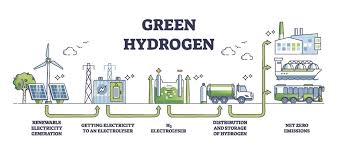Green Hydrogen System Bolsters Stability of Renewable Energy Grid, Finds Korean Research Team
A team at the Korea Institute of Energy Research (KIER) has successfully tested a green hydrogen system to bolster the stability of renewable energy. Green hydrogen, produced by applying electrical energy from renewable sources like solar and wind power to water, presents an environmentally friendly hydrogen production process with zero carbon dioxide emissions.
Leading the Energy AI and Computational Science Laboratory at KIER, Dr. Joungho Park and his research team have posited that green hydrogen, aiding the conversion and storage of surplus energy, is the most effective solution to manage the volatility of a renewable energy power grid that combines wind and solar power. The research has been published in Energy Conversion and Management.
The 28th United Nations Conference of the Parties (COP-28, December 2023) emphasised renewable energy as a crucial strategy to achieve carbon neutrality and energy security, setting a goal to triple renewable energy generation capacity by 2030. In line with this initiative, the Republic of Korea also announced a strategy to expand the distribution and strengthen the supply chain of renewable energy, supporting the sustainable growth of its domestic renewable energy industry.
To bolster renewable energy, it is critical to manage factors such as unpredictable wind speeds and solar radiation, in addition to distribution. Power-to-Gas (P2G) technology has been proposed as a solution to control variability, which uses surplus renewable energy to produce carbon-free green hydrogen, compensating for variability through timely use.
P2G technology converts electricity into a gas, such as hydrogen or methane, using renewable electrical energy from sources like solar and wind power, facilitating storage. The research team developed a model to determine the optimal scale and verify the efficacy of a green hydrogen system needed for a renewable energy power grid, using data from Jeju Island, where solar and wind power generation comprise 20% of the total power generation.
With data like wind speed, solar radiation, and temperature input into the model, it calculates hourly power production and compares it with actual power demand data. This allows researchers to assess the adequacy of power supply and demand, and apply a green hydrogen system and batteries to determine the optimal system Levelized Cost of Electricity (sLCOE) and Loss Probability of Power Supply (LPSP). Thus, the economic feasibility and stability of each green hydrogen and battery system can be evaluated according to scale, and the optimal scale can be predicted.
The model simulation results showed that batteries are the most effective solution when using solar power alone, while green hydrogen is the most effective when using wind power alone. However, when combining solar and wind power, green hydrogen exhibited the highest economic efficiency and the lowest power supply losses. This finding is consistent with policy directions promoting a balanced deployment of both solar and wind power, providing foundational data for establishing renewable energy transition strategies.
Dr. Park explained the significance of the study as it validates the efficacy of green hydrogen in addressing power grid instability and output restriction issues associated with expanding renewable energy. “By designing optimal energy conversion and storage system setups tailored to the characteristics and situations of different regions, this research provides insights for the government and companies to develop green hydrogen-related strategies, thus facilitating rational decision-making,” he added.
Original Story at techxplore.com
